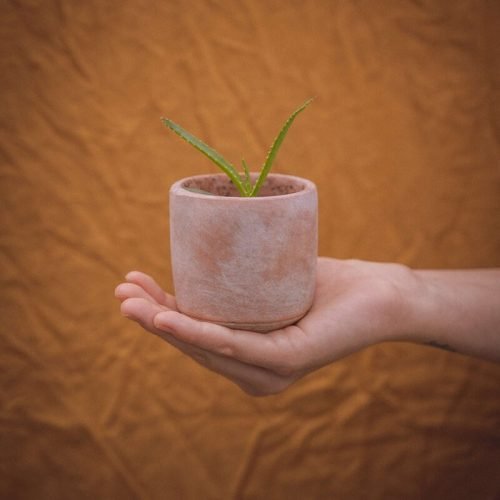Do you want your home to be vibrantly green with beautiful houseplants?
Do you crave the tranquility & inspiration that houseplants give to any environment?
And do you want to make sure your plants grow and stay healthy and strong with minimum effort?
These questions were precisely the ones that Heaven and Stijn had in mind when they founded Grow your Ownn, the brand they created to share their love of plants.

Their premise? With the help of their growsets everyone can grow their own houseplant!
So let’s look at some of the products they have to offer, as explained in their website.
Aloe Vera
A succulent that belongs to the Asphodel family.
Size: Its thick leaf grows from the base and reaches a maximum height of about 60cm and 8cm wide at the base, after which it forms into a point. The leaves are pressed together and are blue-green in color.
Watering: Because its origin is in the Arab part of the world, it needs little moisture. It can store water in its gelatinous leaves. In fact, it’s important not to give it too much water! (In the colder months it can go weeks without water)

Philodendron Selloum
Also known as Horsehead Philodendron, this houseplant belongs to the Araceae family, one of the three Philodendron families. It comes from South America: Brazil, Bolivia, Argentina and Paraguay. It can grow on the bottom but also likes to climb a moss stick, where it produces long aerial roots.
Size: This houseplant grows very fast! In its natural habitat it can grow over 10 meters high with leaves of almost one meter. Indoors, its leaves will reach a maximum of 30 to 40 cm.
Watering: Its large leaves are thick and leathery, so they don’t evaporate much moisture. This means it needs surprisingly little water. Caution! It doesn’t like to stand on wet earth, because its roots may rot. Keep it evenly moist without drying it out completely. Multiple browning leaves indicate too little water (of course a few fall off due to age), while yellow leaves are caused by too much water.

Phoenix Roebelinii
Aka Dwarf Palm or Dwarf Date Palm, it belongs to the palm species. It’s originally from South East Asia but has been in Europe for a long time.
Size: Although it can grow up to 3 meters high, it belongs to the smaller palm species. At first it will grow slowly but once its trunk has formed, it will grow faster and faster!
Watering: This houseplant loves a good drink of water, 2 to 3 times a week! Especially important during the summer. Check daily whether its soil is still moist enough (Drying out the soil can cause permanent damage).

Coffee Arabica
Yes, coffee beans can grow! (If you take care of them!). Originally from Ethiopia, it went from there to the Arab countries and then it spread to the rest of the world.
Size: In its natural habitat it can grow up to 5 meters high. When you plant it in a medium sized pot it will grow to about 30 cm high.
Watering: It grows well in slightly moist soil, so make sure the soil never dries out! It also likes it when you give it a nice spray, especially in autumn and winter. It keeps its foliage shiny and prevents dust from building up on its leaves. Plus, it ensures that I can absorb sunlight well.

Strelitzia Nicolai
From the plant family is the Strelitziaceae, it is also known as the bird of paradise plant or the wild banana (due to to the shape and color of its flowers). Originally from South Africa, in the 18th century it was shipped to many other countries. In fact, the wife of the English King George the 3rd, Charlotte of Mecklenburg-Strelitz, loved plants and gave rise to its name!
Size: Its woody trunks can reach a gigantic height of up to 6 meters in their natural habitat, its leaves are up to 1.8 meters in diameter and its flowers can grow up to 18cm by 45cm. What about indoors? It is a rapidly-growing plant that needs to reach a certain size before it blooms. A Sterlitzia Nicolai that is 3 to 4 feet tall grows well in a 10-inch pot. A 5- to 6-foot plant usually thrives in a 14-inch pot.
Watering: In summer it am very thirsty, so you need to give it so much water that its soil is dry again after a week. It is important to prevent its roots from standing in water, because this can cause rot. In winter its is less thirsty, but it still likes to get water weekly, so just reduce the amount. It also loves to get a nice spray once in a while, which helps remove the dust from its leaves so that the sunlight can reach them better.

There you go! 5 lovely houseplants you can put in your home to make your surroundings (and your soul) happier.
It is backed by science: houseplants improve the quality of indoor air, help reduce stress levels, they may sharpen your attention and even help you recover from illness faster!
So give them a try!

